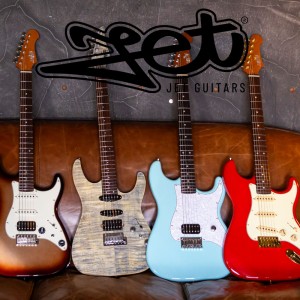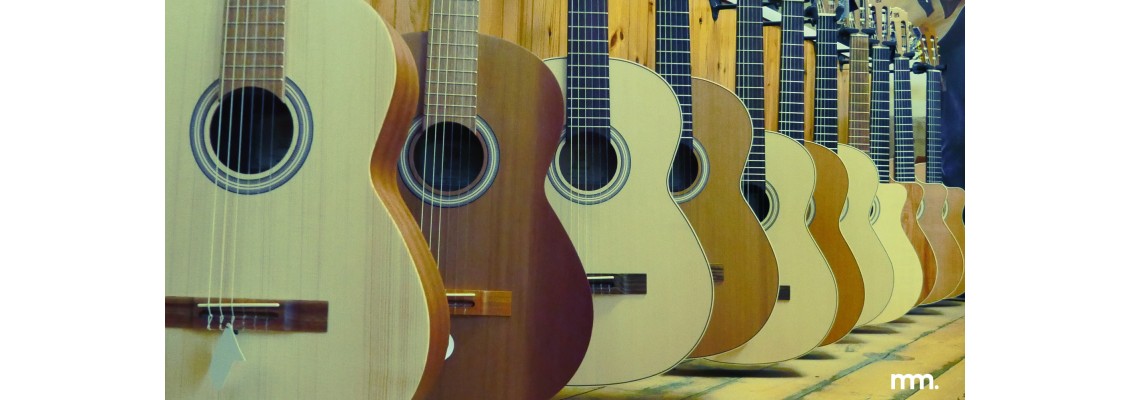
Why Your Guitar’s Tonewood is Everything
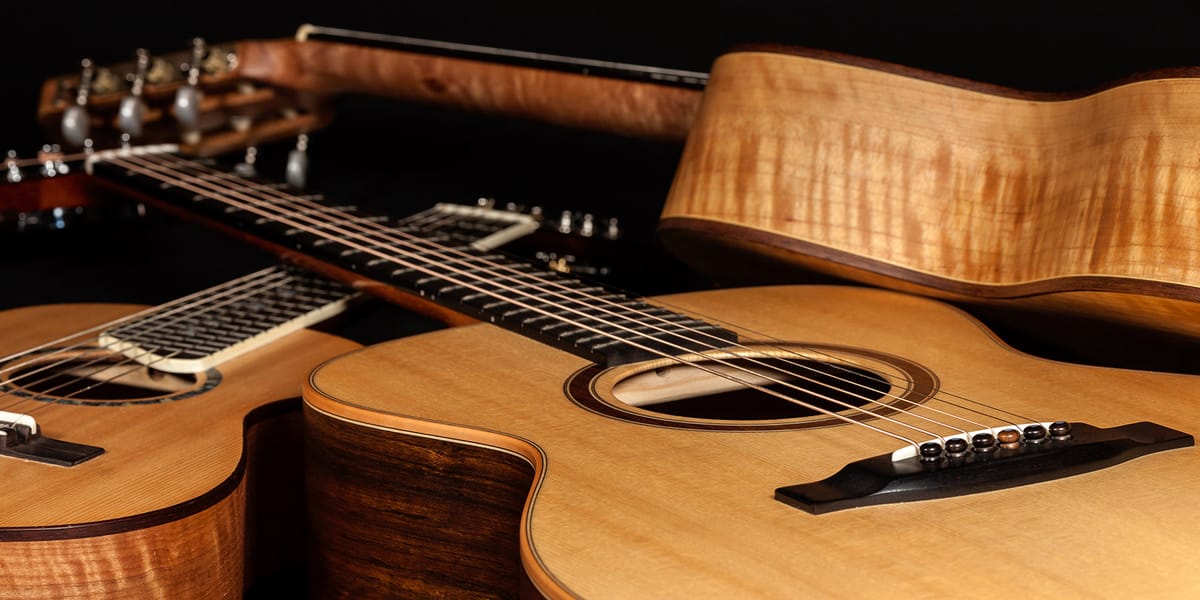
Ask any seasoned guitarist why they love their favourite instrument and they’ll rarely stop at "the brand" or "the look." More often than not, they’ll talk about how it feels, how it resonates, and how it sings in their hands. And at the heart of that sonic personality? The tonewood.
Welcome to “Wood Matters”, a deep-dive from Musicmaker exploring the magical, musical world of tonewoods. Today, we crack open the sonic anatomy of your guitar and shine a spotlight on the real heroes—those beautiful timbers shaping everything from attack and sustain to warmth and shimmer.
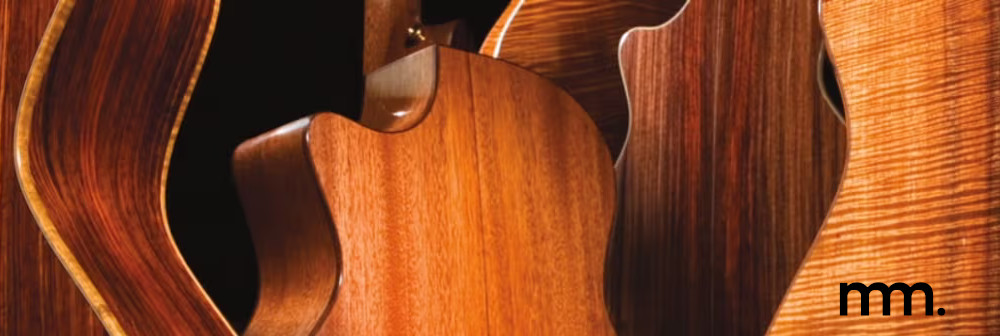
What Is a Tonewood?
A tonewood is any wood selected for its specific acoustic properties. Builders choose different woods for their density, flexibility, response, and how well they age. Solid woods resonate naturally and age beautifully; laminated woods are durable and budget-friendly.
The top (or soundboard) usually handles the bulk of vibration and volume. The back and sides shape the tonal colour. The neck and fingerboard affect feel and attack. Every species adds something unique.
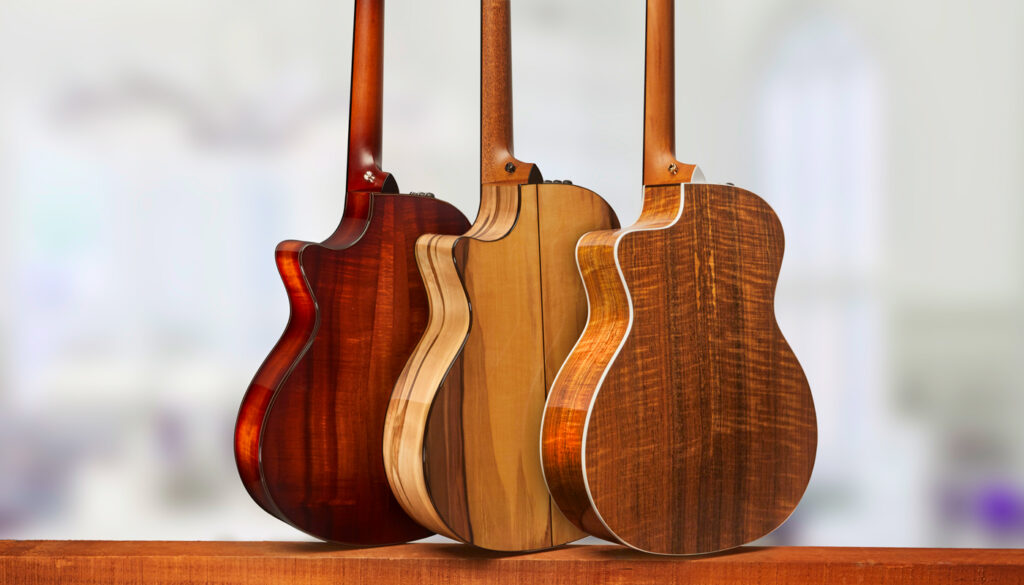
The Big Five: Essential Tonewoods Every Guitarist Should Know
1. Spruce – The Soundboard Standard
Spruce is the classic go-to top wood. Light, stiff, and highly resonant, it’s the backbone of modern acoustic sound. Variants include:
- Sitka Spruce – bright, punchy, and incredibly dynamic. Works across all styles.
- Adirondack Spruce – louder, stiffer, more “vintage” in character with incredible headroom.
- Torrefied Spruce – heat-treated for that “aged-in” response. Rich, open, and ready to sing.
- Tone: Clear, balanced, responsive
Best For: Strummers, flatpickers, all-rounders. Combine with rosewood or koa for a versatile build.
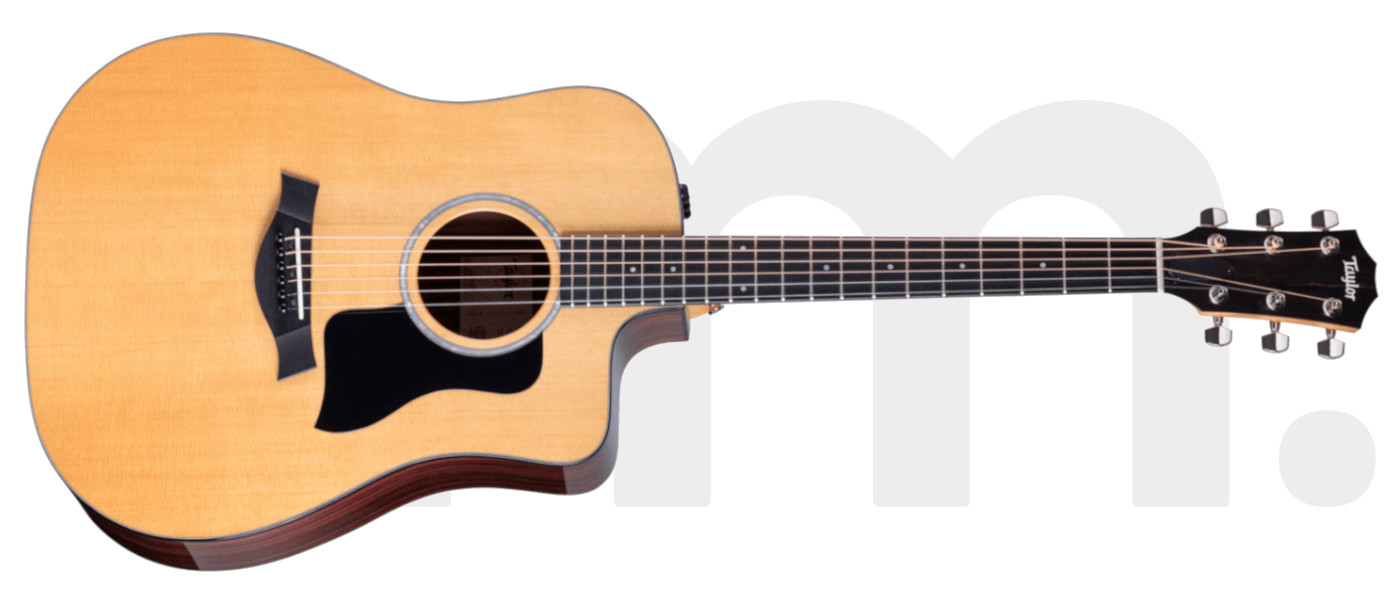
The Taylor 210ce Plus Torrified Spruce / Rosewood - Natural - play it in Musicmaker today
2. Mahogany – Grit, Warmth, and Vintage Soul
Mahogany brings a dry, earthy tone with loads of character. It emphasises midrange punch over shimmering highs, making it ideal for vocals and bluesy grooves. Mahogany tops (like on the Taylor 324ce) offer fast attack and woody warmth.
- Tone: Warm, punchy mids, quick response, less overtone complexity
Best For: Fingerpickers, singer-songwriters, players who want warmth over brilliance.
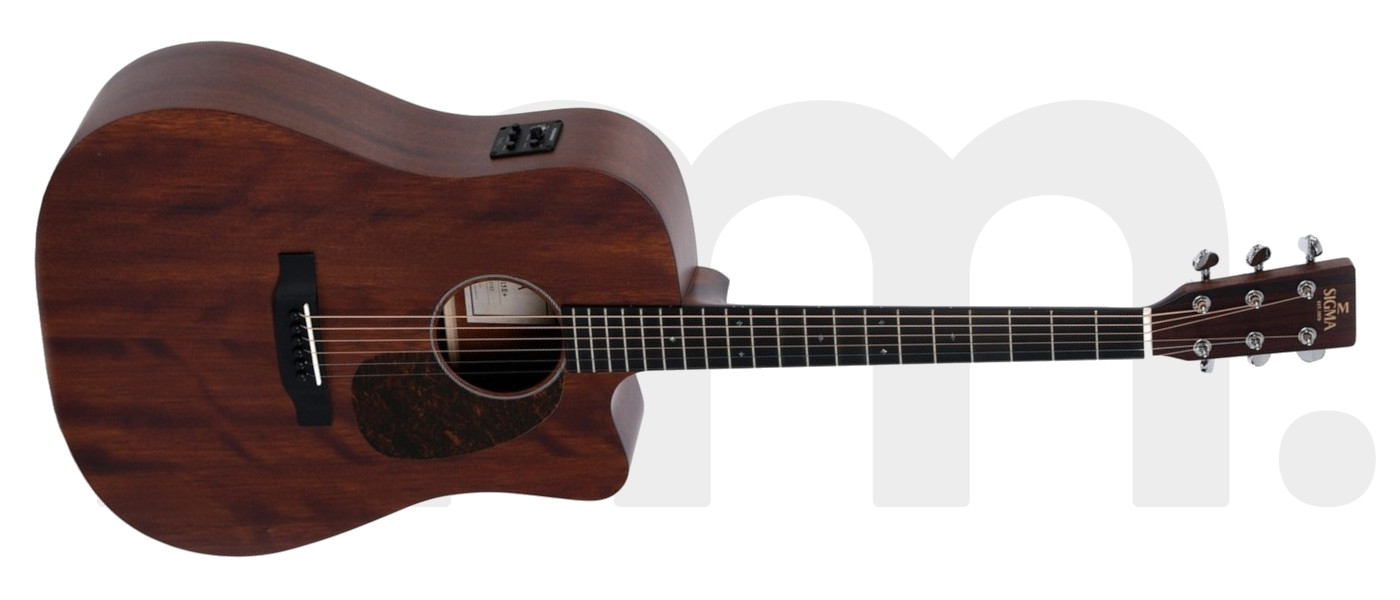
The Sigma DMC-15E Dreadnought Semi Acoustic Guitar - available in Musicmaker now
3. Rosewood – Lush Overtones & Low-End Power
With deep bass and glassy high-end sparkle, rosewood delivers a wide dynamic range. It enhances harmonic content, making chords bloom and melodies shimmer. You'll find it on Taylor’s 800 Series and many high-end dreadnoughts.
- Types: East Indian, Brazilian (vintage), Honduran
- Tone: Deep bass, sparkling highs, lush overtones
Best For: Players who love resonance, sustain, and complexity. Great for recording, performance, and solo arrangements.
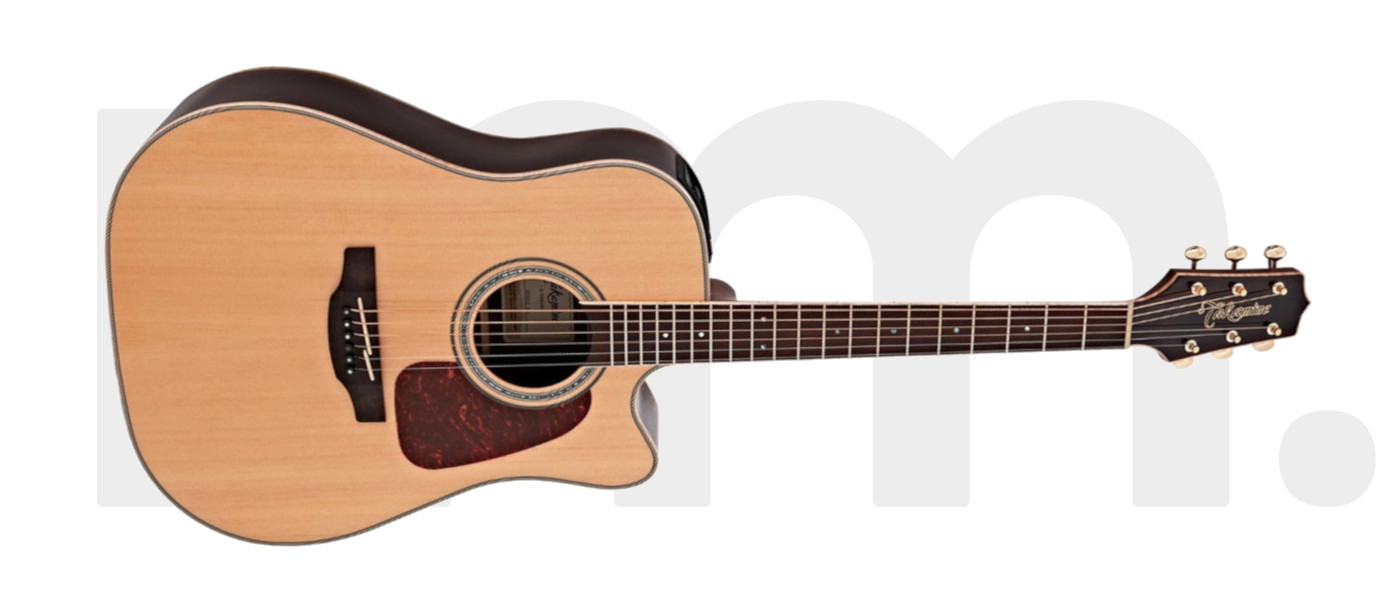
The Takamine GD90CE Dreadnought Cutaway - Spruce, Rosewood with Gigbag
4. Maple – Bright, Clean, Stage-Ready
Maple is all about focus and projection. It reflects sound more than it absorbs, giving you fast note decay, excellent articulation, and minimal muddiness. It’s a live player’s dream—cutting through mixes and resisting feedback.
- Tone: High clarity, fast note decay, visual beauty
Best For: Gigging musicians, percussive strummers, clarity junkies.
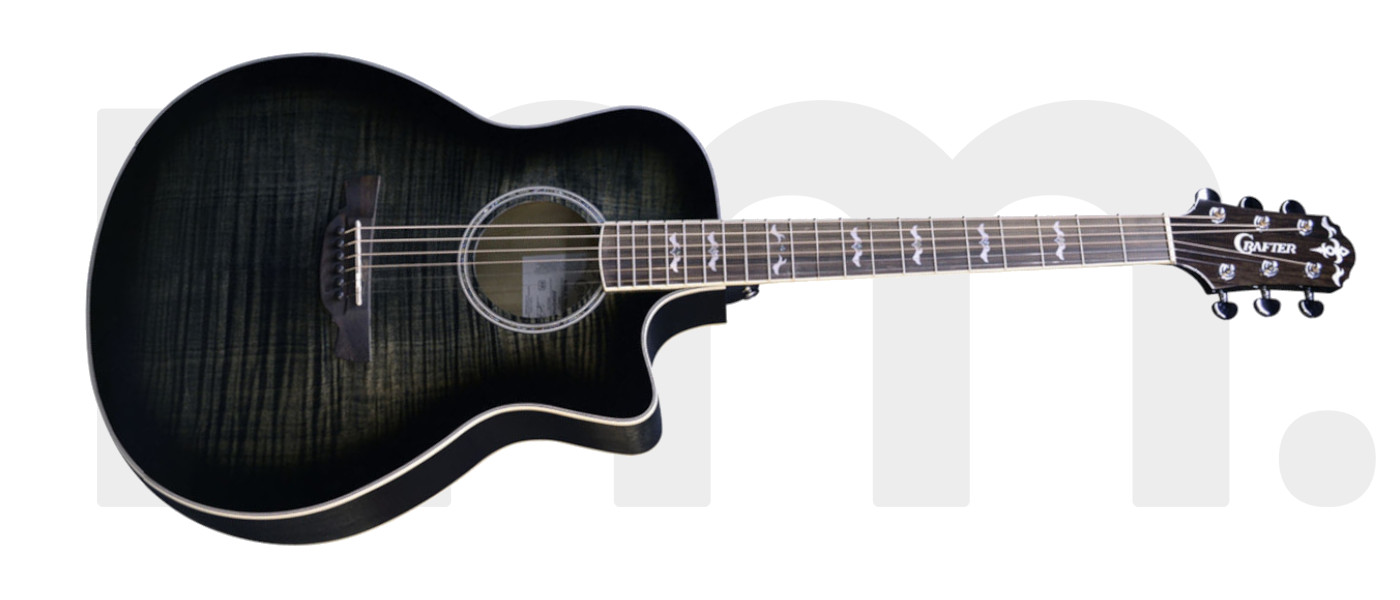
The absolutely lovely Crafter NOBLE TBK Electro-Acoustic Cutaway Guitar - Black
5. Koa – Hawaiian Beauty, Evolving Tone
Native to Hawaii, koa is stunning both visually and tonally. It starts with a bright, clear tone similar to maple, but over time it warms up—developing a sweet, mellow character as it “opens up” with play. It’s loved for both its snap and soul.
- Tone: Bright and snappy when new, rich and warm with age
Best For: Expressive fingerstyle players, collectors, and anyone who wants a guitar that grows with them.
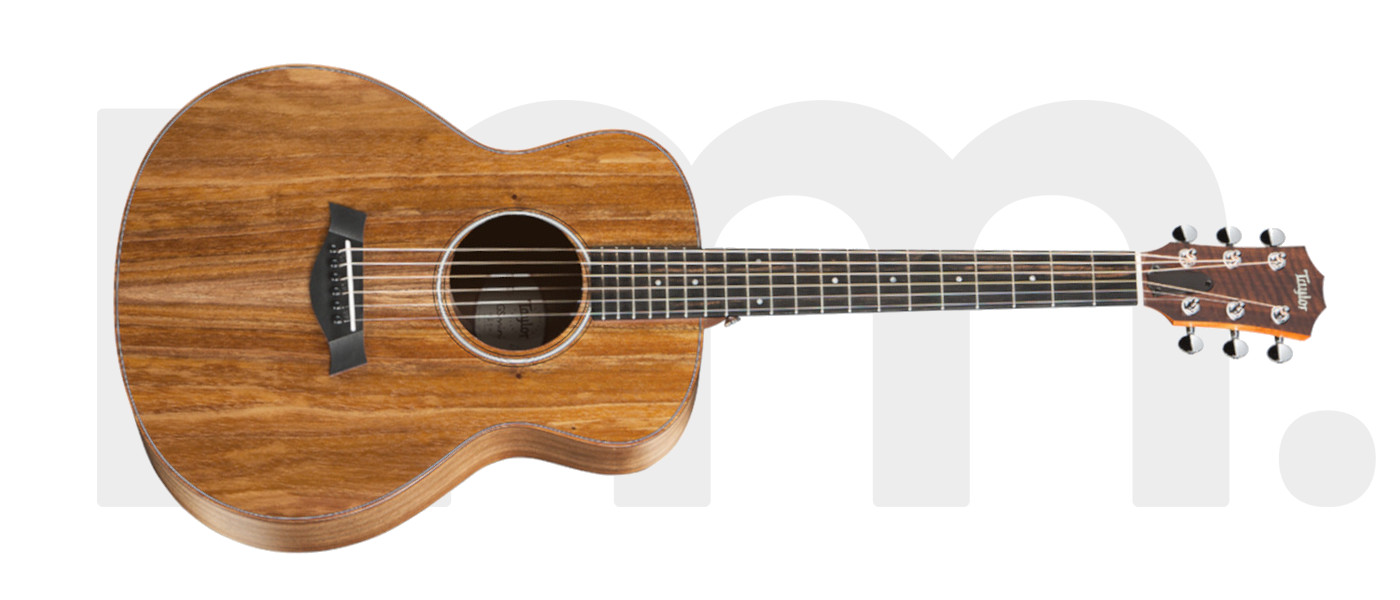
Come in and test the Taylor GS Mini-e Koa at Musicmaker today
Advanced Insights: How Wood & Design Interact
Tonewood & Body Shape Synergy
- Spruce + Grand Auditorium = Sparkly highs, balanced mids—versatile and comfortable.
- Mahogany + Dreadnought = Punchy midrange and projection—perfect for folk, blues, and acoustic rock.
- Koa + Grand Concert = Bright articulation with intimacy—ideal for delicate fingerpicking.
The “Opening Up” Effect
Solid woods age with time and vibration. This isn't just folklore—the cellular structure of the wood settles and adapts, improving resonance and sustain. Koa is especially famous for this transition: starting crisp and maturing into velvet.
Torrefaction: Aged Tone, Instantly
Seen in models like the Taylor 214ce-K, torrefied spruce undergoes a special roasting process that mimics years of aging. The result? Vintage warmth and responsiveness from day one.
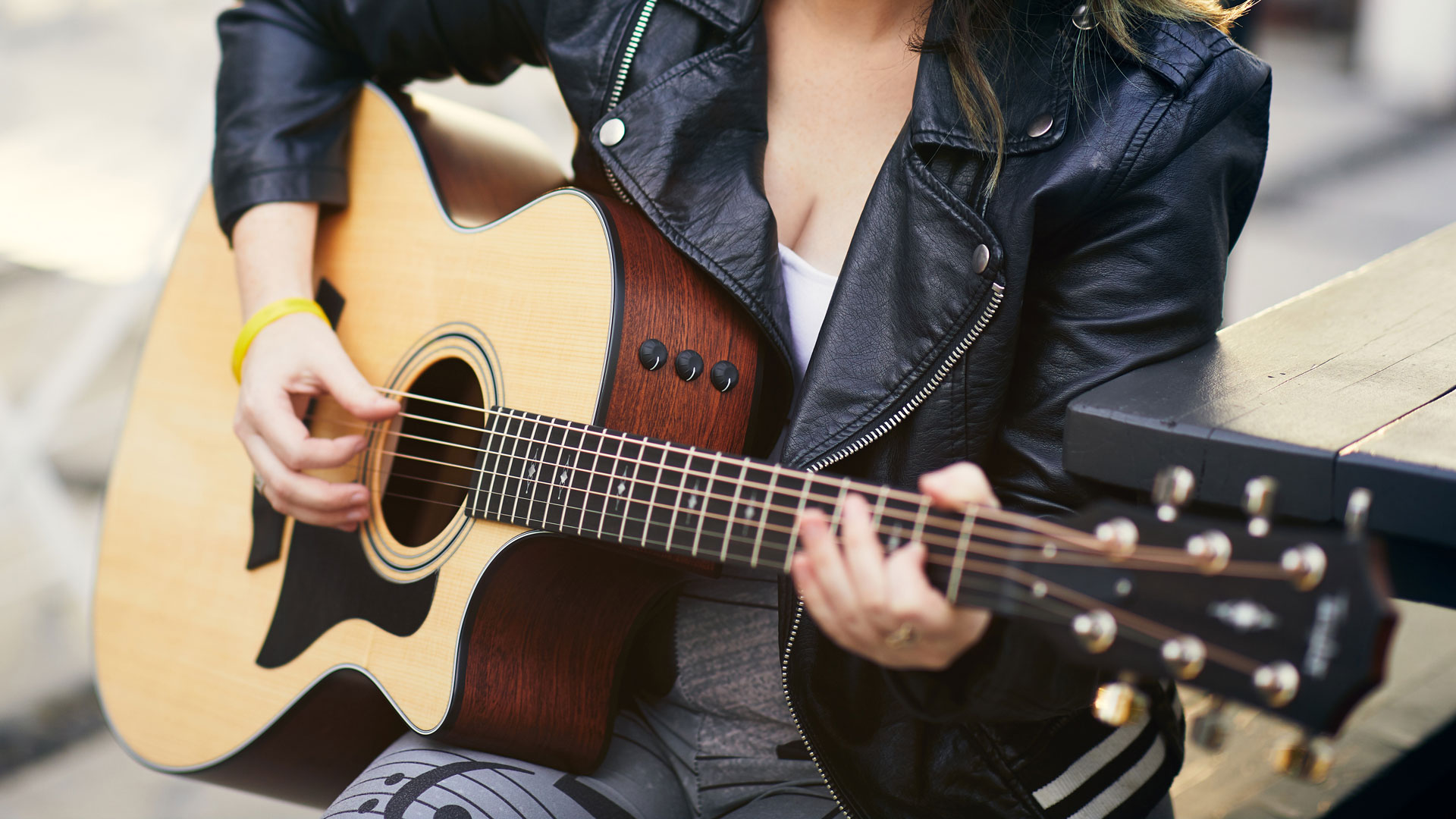
Frequently Asked Questions
Q: What’s the best tonewood for fingerpicking?
Try cedar, mahogany, or koa. All have quick response and a mellow attack perfect for nuanced, articulate playing.
Q: Why do guitars sound better with age?
Solid wood dries, resonates more freely, and settles over time. The more you play it, the more it sings back to you.
Q: Should I choose solid wood or laminated wood?
Solid wood offers better resonance and aging. Laminate is great for durability, travel, and humid conditions.
Q: Is Koa worth the investment?
Absolutely. You get visual beauty, tonal evolution, and rarity—all in one. Plus, it sounds better the more you play it.
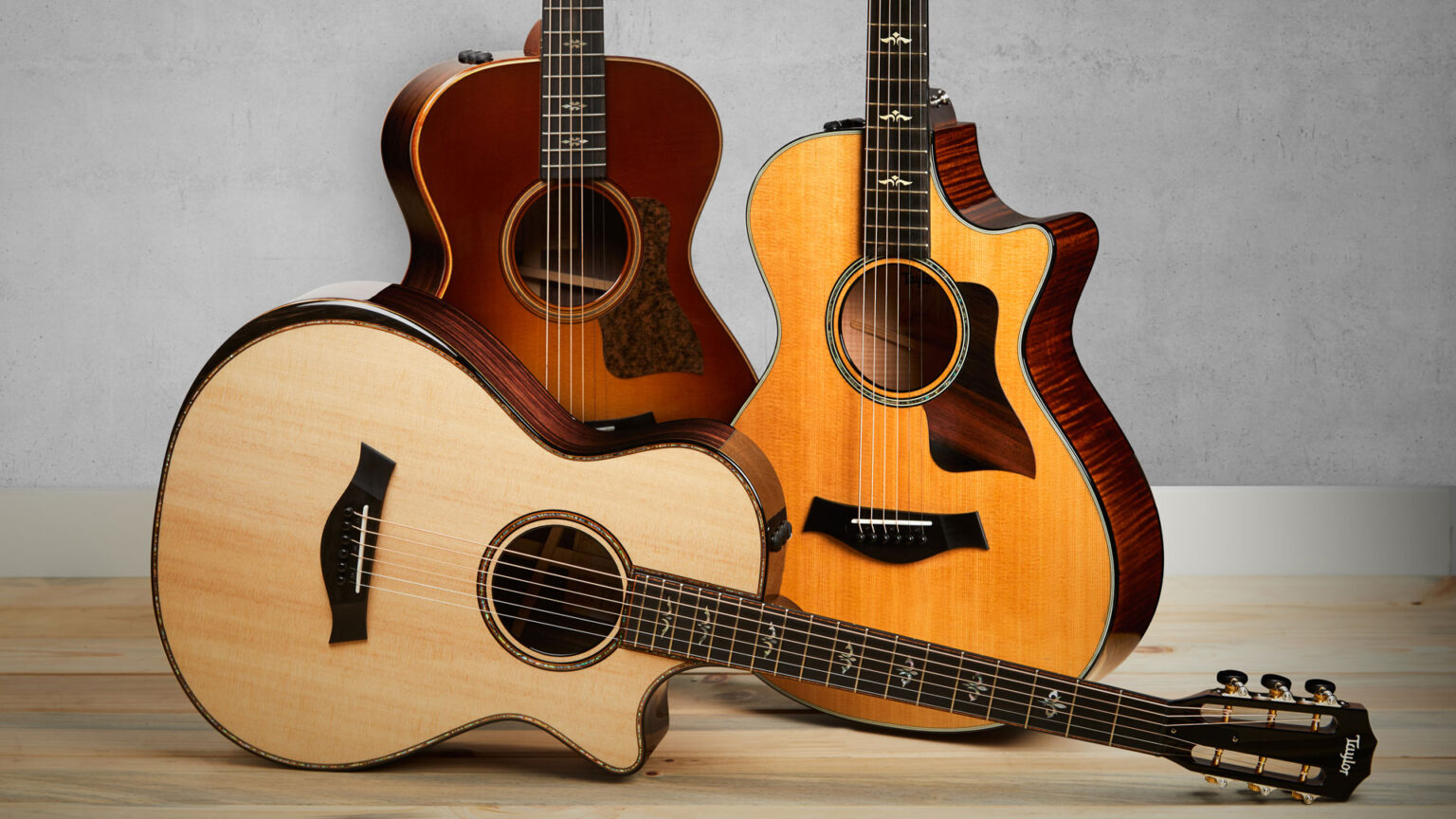
Ready to Explore? Come Play Your Next Guitar at Musicmaker
Nothing beats hearing and feeling tonewood in person. At Musicmaker in Dublin, we stock a huge range of acoustic guitars from Taylor, Takamine, Sigma, Vintage and more—each showcasing the best in tonewood mastery.
Talk to our staff, bring your favourite plectrum, and get hands-on. Whether you’re chasing crisp harmonics, earthy mids, or just want a guitar that looks like it belongs in an art museum—we’ll help you find the one.
Browse our full range of Acoustic Guitars Here.
Got any questions about these woods? About other woods? About sustainable forestry practices?
Get in touch via the Intercom button below, we are always happy to help out.





